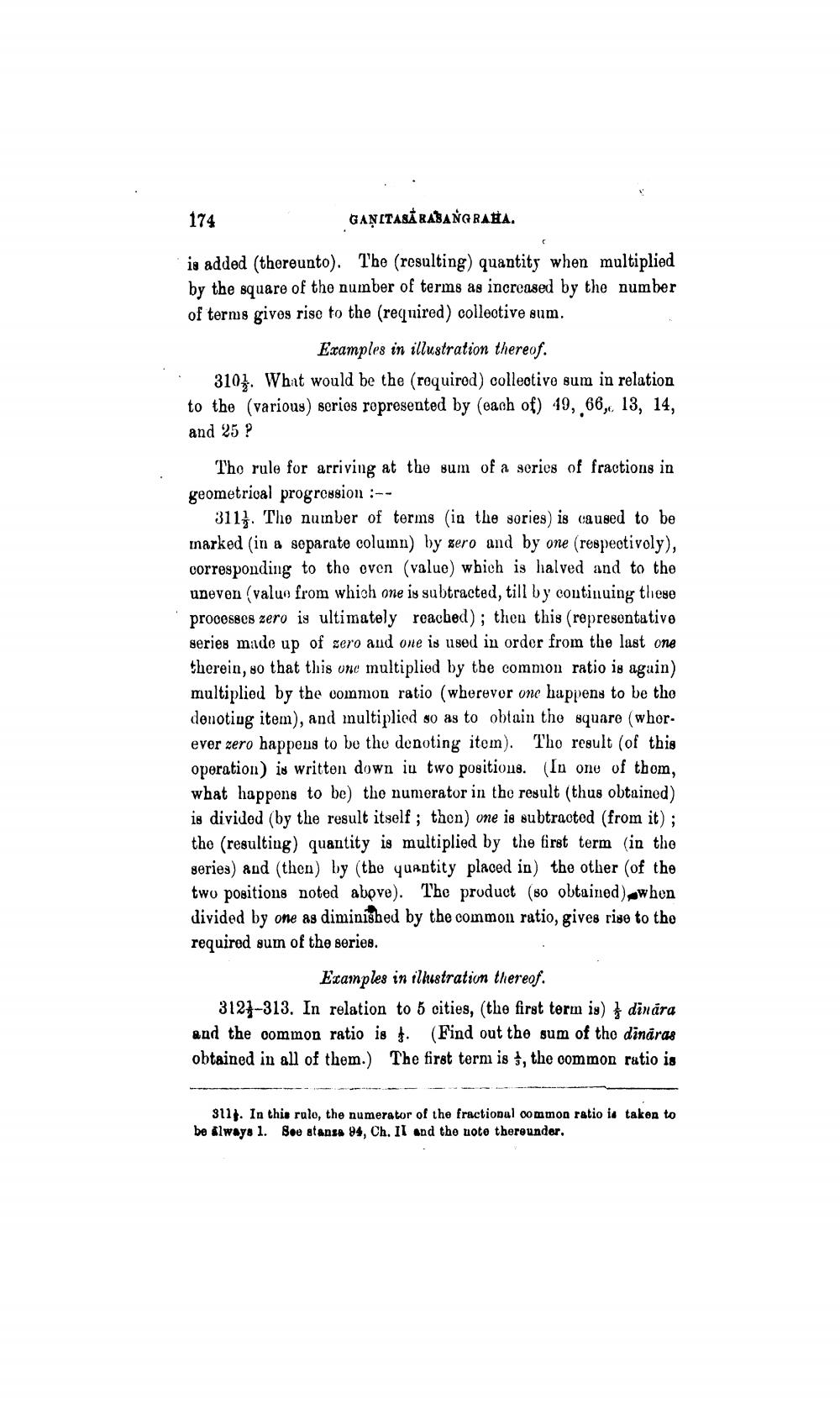________________
174
GANITASÃ RASANG RATA.
is added (thereunto). The (resulting) quantity when multiplied by the square of the number of terms as increased by the number of terms gives rise to the (required) collective sum.
Examples in illustration thereof. 3101. What would be the required) collective sum in relation to the (various) serios represented by each of) 49, 66, 13, 14, and 25 ?
Tho rule for arriving at the sum of a series of fractions in geometrical progression :--
311). The number of terms in the sories) is caused to be marked in a separate column) by sero and by one (respectivoly), corresponding to the oven (value) which is halved and to the uneven (value from which one is subtracted, till by continuing these processes zero is ultimately reached); then this (representative series made up of zero and one is used in order from the last one therein, so that this one multiplied by the common ratio is again) multiplied by the common ratio (wherever one happens to be the denoting item), and inultiplied so as to obtain the square (whor. ever zero happens to be tho denoting item). Tho result (of this operation) is written down iu two positions. (In one of thom, what happens to be) the numerator in the result (thus obtained) is divided by the result itself; then) one is subtracted (from it); the resulting) quantity is multiplied by the first term in the series) and (then) by (the quantity placed in the other of the two positions noted above). The product (80 obtained).when divided by one as diminished by the common ratio, gives rise to the required sum of the series.
Examples in illustration thereof. 3127-313. In relation to 5 cities, (the first term is dināra and the common ratio is $. (Find out the sum of the dināras obtained in all of them. The first tern is , the common ratio is
-
-
-
-
--
---
--
..
.
311. In this rolo, the numerator of the fractional common ratio ia taken to be always 1. See stansa 94, Ch. Il and the note thereunder,




